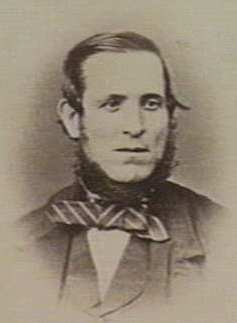- Richard Heales
Infobox_Premier | name =Richard Heales
nationality =Australian
order =4thPremier of Victoria
term_start =26 November 1860
term_end =14 November 1861
predecessor =William Nicholson
successor =John O'Shanassy
deputy =

caption =
birth_date =1821
birth_place =London ,England
death_date =19 June 1864
death_place =Elsternwick ,Melbourne , Victoria
constituency =
party =
spouse =Elizabeth
profession =
religion =Congregational
footnotes =Richard Heales (1821 –
19 June 1864 ),Australia n colonialpolitician , was the 4thPremier of Victoria .Heales was born in
London , the son of an ironmonger. He was apprenticed as a coachbuilder and migrated to Victoria with his father in 1842. He worked for some years as a labourer before establishing himself as a wheelwright and coachbuilder in 1847. Thereafter he grew increasingly prosperous. He was a teetotaller and a leading temperance campaigner. The Temperance Hall in Russell Street was built largely due to his efforts.Heales was elected to the
Melbourne City Council in 1850. He resigned in 1852 and returned toEngland , but was back in Melbourne in time for the first election held under the newConstitution of Victoria in September 1856. He stood for the seat of Melbourne in the Legislative Assembly, but was defeated. He was elected member for East Bourke Boroughs at a by-election in March 1857, and held the seat for the rest of his life.In October 1860, Heales was a leading critic of the land bill introduced by the government of William Nicholson. When the Nicholson government was defeated in November 1860, Heales became Premier and Chief Secretary. Heales set about advocating his own land policy, but in June 1861 he was defeated on a vote of confidence. He obtained a dissolution and with strong rural support was returned with an increased majority. In November 1861, however, some of his senior supporters defected, and he resigned as Premier.
Although he was an active Congregationalist, Heales was an opponent of the clause in the Victorian Constitution which provided for state funding for religion, and he favoured a unified secular education system. Both Anglicans and Catholics, on the other hand, favoured state-funded religious schools. In 1862 Heales introduced a bill creating a single Education Board to rationalise the school system, which was passed with broad support.
When
John O'Shanassy was defeated as Premier for the third time in June 1863, Heales was appointed the President of the Board of Land and Works, and Commissioner of Crown Lands and Surveys in the ministry ofJames McCulloch . He brought in two further land bills during this time, but both were rejected by the Legislative Council.Heales fell ill in 1864, and died in June. He is buried in
Melbourne General Cemetery . He was survived by his wife and eight children. The Melbourne suburb of Healesville is named after him. In 1964, a Centenary of Healesville medal was commissioned and given to residents of the town. An image of Heales was on the front of the medal.References
*Geoff Browne, "A Biographical Register of the Victorian Parliament, 1900-84", Government Printer, Melbourne, 1985
*Don Garden, "Victoria: A History", Thomas Nelson, Melbourne, 1984
*Kathleen Thompson and Geoffrey Serle, "A Biographical Register of the Victorian Parliament, 1856-1900", Australian National University Press, Canberra, 1972
* Raymond Wright, "A People's Counsel. A History of the Parliament of Victoria, 1856-1990", Oxford University Press, Melbourne, 1992
*Dictionary of Australian Biography|First=Richard|Last=Heales|Link=http://gutenberg.net.au/dictbiog/0-dict-biogHa-He.html#heales1
*
Wikimedia Foundation. 2010.
